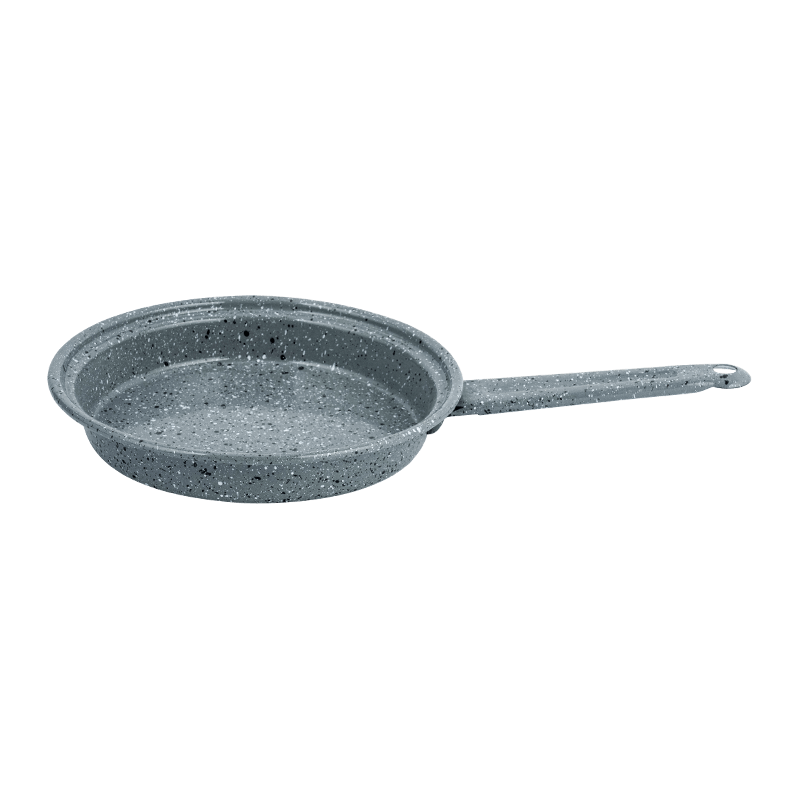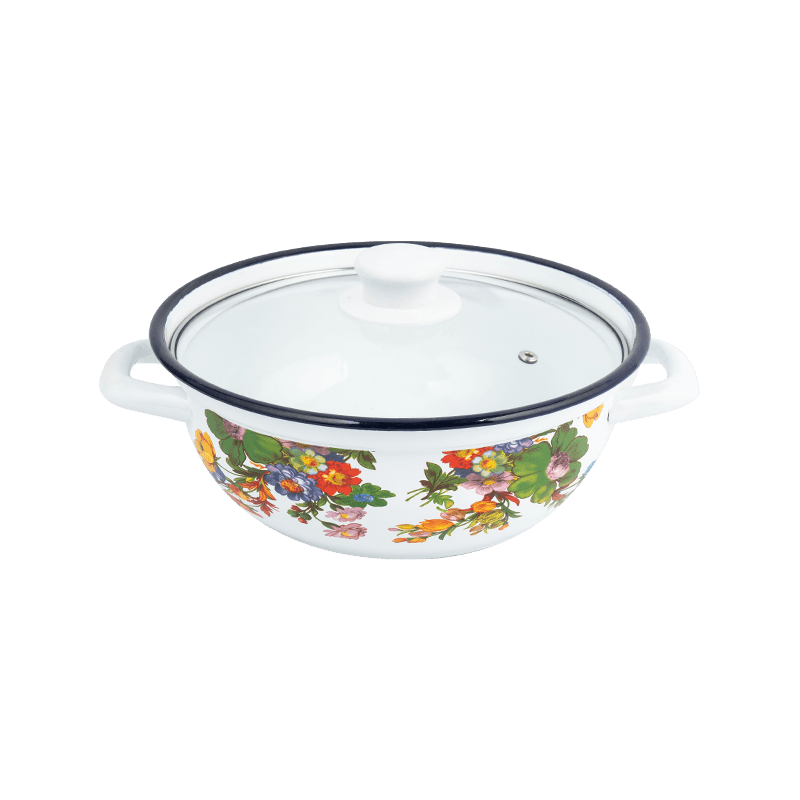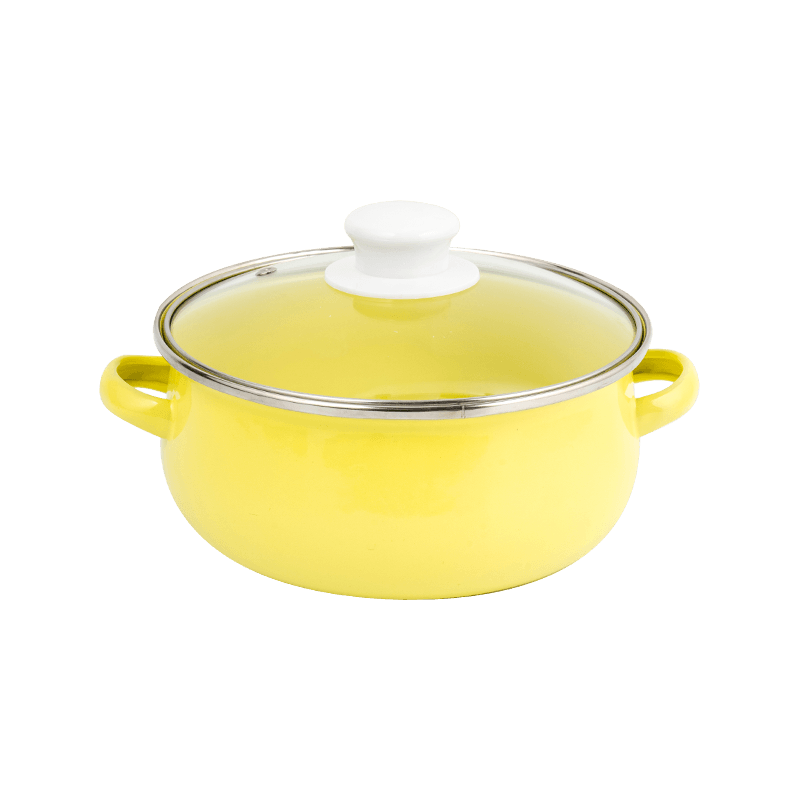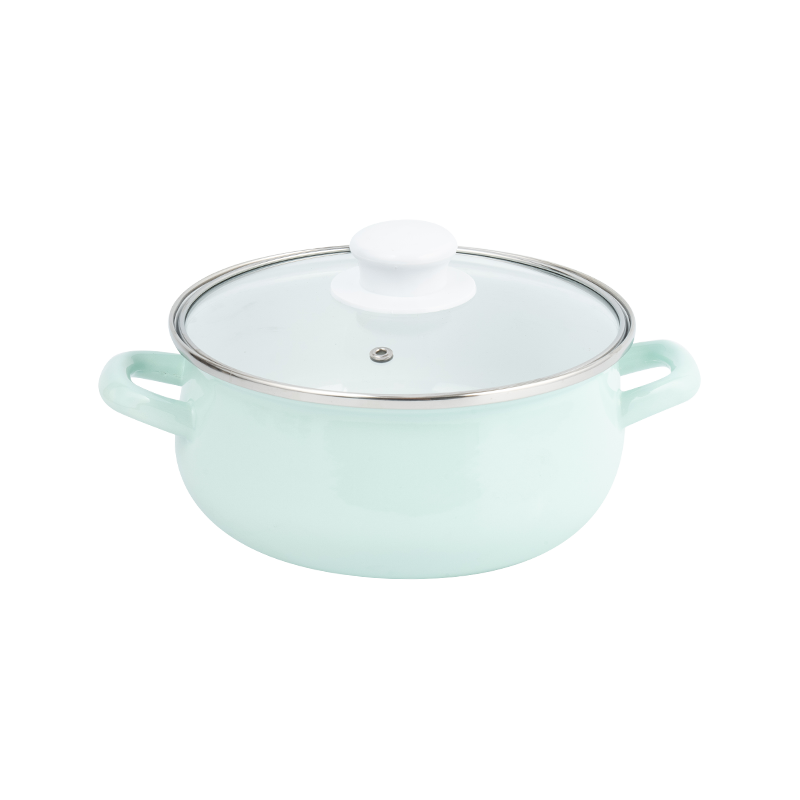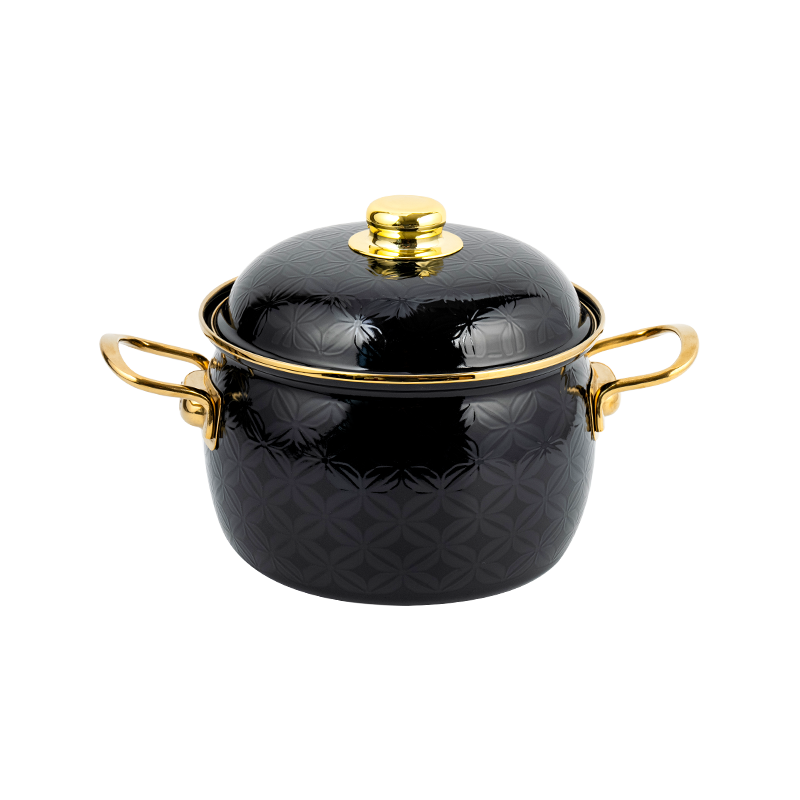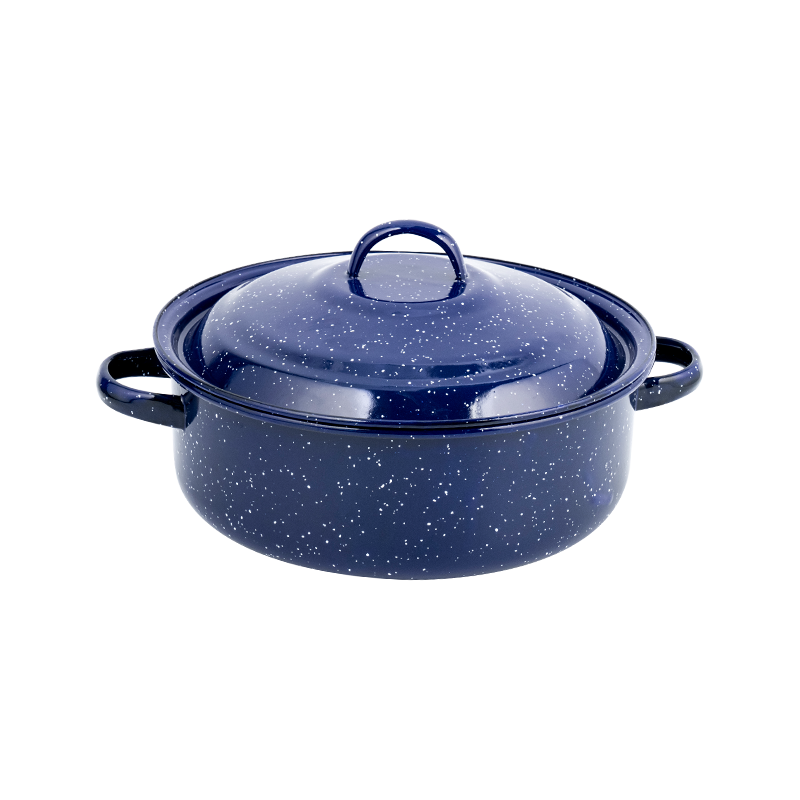Whistling enamel kettles have long been favored for their aesthetic appeal, reliable performance, and easy maintenance. One of the key features that enhance the functionality of these kettles is the enamel coating, which provides both durability and ease of cleaning.
The Structure of Enamel Coating
Enamel is a glass-like substance that is fused onto the metal surface of the kettle at high temperatures. This process involves melting a powdered glass mixture onto the surface of the kettle, which is then cooled to form a smooth, hard, and durable finish. The enamel coating on a Whistling Enamel Kettle serves as a protective layer, safeguarding the underlying metal from rust, corrosion, and other environmental factors that can lead to deterioration over time.
Heat Resistance and Durability
The enamel coating provides excellent heat resistance, which is crucial for a kettle that is exposed to high temperatures during boiling. Unlike some other materials, enamel is not easily affected by heat fluctuations, making it ideal for long-term use. The hardened enamel surface ensures that the Whistling Enamel Kettle can withstand the wear and tear of daily use, maintaining its integrity even after repeated boiling cycles.
Protection Against Rust and Corrosion
A significant benefit of enamel is its resistance to rust and corrosion. When applied to a metal kettle, the enamel coating creates a barrier that prevents water from coming into direct contact with the metal surface. This is especially important for kettles used frequently with water, which could otherwise lead to the formation of rust. The enamel layer effectively protects the Whistling Enamel Kettle from these risks, ensuring that it remains in good condition for a longer period.
Easy to Clean: A Key Advantage
In addition to its durability, the enamel coating on a Whistling Enamel Kettle makes it incredibly easy to clean and maintain. The smooth, non-porous surface of the enamel prevents dirt, stains, and scale buildup, which can often be a problem with other materials. As a result, cleaning the kettle becomes a simple task that doesn’t require special cleaning products or techniques.
Non-stick Surface
One of the most significant benefits of the enamel coating is its non-stick properties. This means that food residues, mineral deposits, and water stains are less likely to cling to the surface. For everyday cleaning, a simple wipe with a damp cloth or sponge is often enough to remove any marks or build-up. This easy-to-clean feature makes the Whistling Enamel Kettle a popular choice among users who value convenience and hygiene.
Resistance to Stains and Odors
Enamel coatings are also resistant to staining and absorbing odors. This feature is especially valuable for kettles used for boiling water, as it ensures that no lingering tastes or smells are imparted to the water. Whether you're using the kettle for tea, coffee, or just boiling plain water, the enamel coating helps maintain the purity of the contents and prevents unwanted residue from affecting the taste.
Long-lasting Appeal
The combination of durability, heat resistance, and ease of maintenance ensures that a Whistling Enamel Kettle remains both functional and visually appealing for years. The enamel surface retains its color and shine, making the kettle an attractive addition to any kitchen. Its longevity means that it doesn’t just perform well over time, but it continues to look like new with minimal effort.
The enamel coating on a Whistling Enamel Kettle is more than just a decorative feature. It serves a critical role in enhancing the durability, heat resistance, and ease of cleaning that users expect from a high-quality kettle. By providing a smooth, non-porous surface, enamel ensures that the kettle remains rust-free, stain-resistant, and easy to maintain, offering both aesthetic appeal and long-term functionality.

 English
English 中文简体
中文简体




